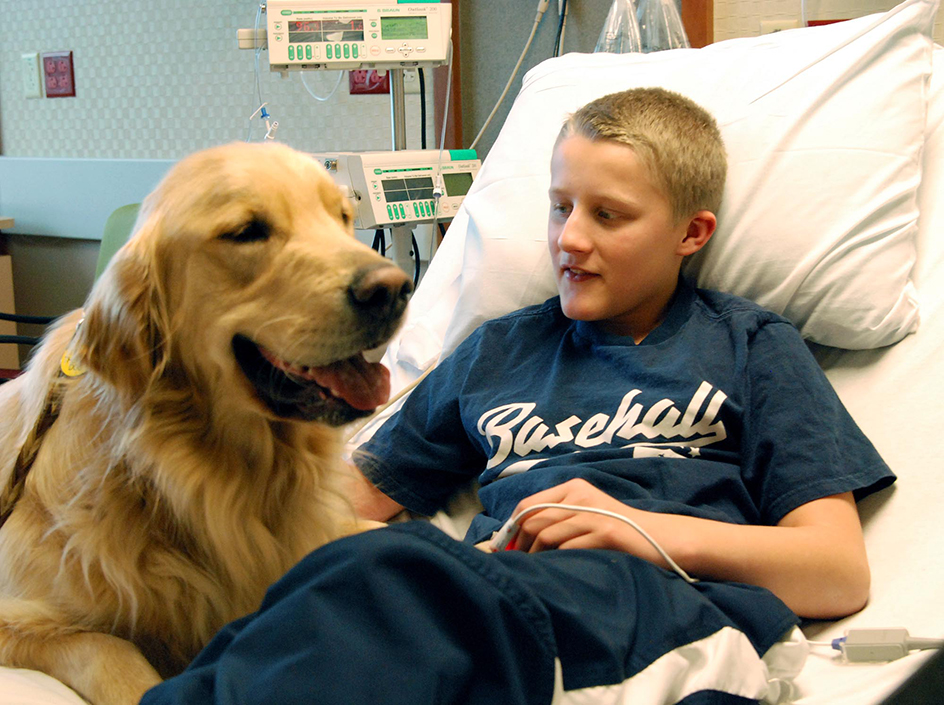Therapy animal is an animal whose companionship helps people who are ill, suffering, or in need. Therapy animals have a variety of roles. A therapy animal may visit people in hospitals, nursing homes, schools, mental health centers, homeless shelters, or other settings. Its presence may help put people at ease during counseling sessions or medical treatments. The use of therapy animals is known as animal-assisted activity or animal-assisted therapy. This work is carried out under the supervision of medical or educational professionals. It can help people with a variety of physical or psychological conditions. Dogs are the most common therapy animals. Other animals used in therapy include cats, dolphins, horses, and rabbits.

Many animals that make good pets may work as therapy animals. Therapy animals must be reliable, predictable, and obedient. They must be able to work well with a variety of people, including children and the elderly. Many handlers of therapy animals are volunteers working with their own pets. It is important that therapy animals and their handlers receive proper training and regular evaluation.
Animal-assisted therapy has been shown to improve blood pressure, heart rate, and immune response. Therapy animals may help patients to better tolerate pain. They may also help relieve the symptoms of depression and anxiety and alleviate boredom and loneliness.
The American psychiatrist Boris Levinson helped to popularize animal therapy. He described therapy sessions with children and his dog Jingles in 1969. By the late 1970’s, a number of organizations had been founded to promote animal-assisted therapy. Today, many organizations provide support or training for animal-assisted activity. The American Humane Association, for example, trains handler and animal teams and promotes the value of animal-assisted therapy.
